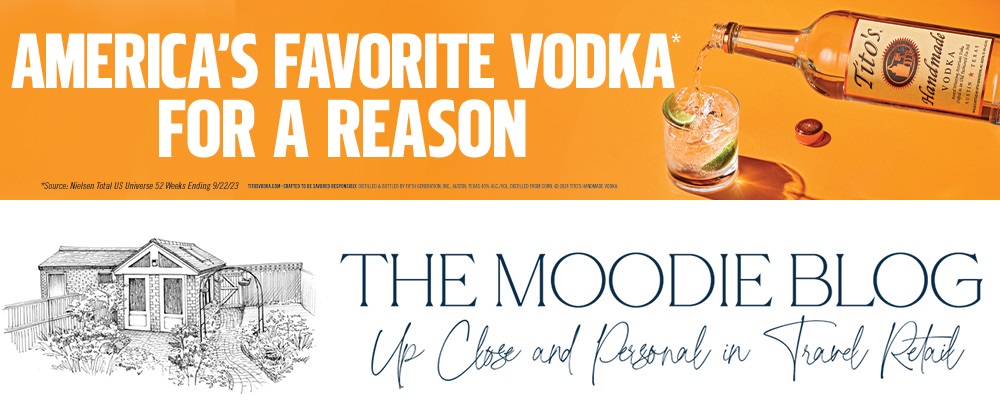Latest posts by Dermot Davitt (see all)
- ‘Living the F1 life’ with Qatar Duty Free - December 1, 2024
- Time, terroir and telling a 300-year story – A Rémy Martin experience - May 25, 2024
- A celebration of speed and sumptuous Qatari hospitality - October 8, 2023
I’m in the middle of a whirlwind visit to Japan this week, which given the changing dynamics in the business here, could not be more timely.
There are fascinating stories everywhere you look from the likely opening of the country’s first arrivals duty free stores to the early struggles of the fledgling downtown duty free business. From the surging popularity of Japanese cosmetics and confectionery among visitors to the softening of luxury spend, notably among PRC consumers. All against the backdrop of the government’s ambitious plans to boost overseas visitor arrivals in the run-up to 2020, as Japan hosts the Olympic Games.

Each of these stories has its own Japanese twist, as I’ve discovered this week. Take arrivals duty free. A breakthrough for the industry at first glance, and potentially a risk factor for overseas travel retailers who host Japanese travellers, the impending law change to introduce the channel is being greeted with extreme caution by many stakeholders here.
“I have questions about how well arrivals duty free will do here,” one senior figure told me earlier. “Can we convince locals to wait to buy until they return home? What will they want to purchase? The price differential on liquor between duty free and domestic has been eroded by years of parallel imports and their availability on the local market, and wines & spirits are important traditionally in arrivals. There is some gifting potential but it’s unclear how much. People like to buy their souvenirs overseas. And visitors to Japan won’t see the attraction.”
It’s not clear either how spaces will be allocated. At least one airport we visited noted conflicting views between Customs and Immigration/Quarantine departments over whether stores should be sited before passport clearance or afterwards, in the baggage halls. Before any stores can open, there are plenty of issues to be teased out.

Downtown duty free has also proved a conundrum for Tokyo’s two operators, Japan Duty Free Ginza and Lotte Duty Free Tokyo Ginza. Taking the success of the off-airport business in Korea or other destinations popular with the Chinese, and translating it to Japan, is not as simple as it appeared a year ago, even with pretty robust inbound Chinese visitor figures. A walk through either store (I visited both several times, at different ends of the day) underlined how quiet the business is compared to the buzz you see in other established markets.
Marketing has been one problem; many people don’t know about the new channel or fail to distinguish it from the downtown tax free business, which numbers around 30,000 stores nationwide. Japan Duty Free Ginza (the Isetan-Mitsukoshi-JATCo-NAA Retailing alliance) has also, we understand, not engaged with travel agencies to encourage group tours. Instead, there’s the bizarre sight of Chinese flocking to the J-Cos counters on the ground floor of the Mitsukoshi department store while the aisles are empty on the eighth floor duty free shop.
Lotte, as in Korea, does pay commission but even then it’s not easy to compete with the tax free stores who pay high commissions and aggressively target the group tour business.

The merchandising mix has been another issue. Whereas the ‘bakugai’ (buying explosion) phenomenon of 2015 was characterised by sales to the Chinese of almost every category, today these visitors have softened their spend on luxury and want a far more Japan-focused offer, it appears. Expect a rethink of the downtown duty free store merchandising mix to reflect those tastes, with J-Cos more prominent and room too perhaps for more Japanese luxury brands rather than the traditional luxury European mainstays.
One experienced industry insider described the Chinese ‘bakugai’ shopping drive as something that offered “false hope” to the market here. That may be over-stating it – PRC consumers continue to visit in ever larger numbers – but they now want cultural experiences that match their high expectations of Japanese hospitality and food in particular, not just shopping.
Yet despite some downbeat opinions about travel retail in the future, the bigger picture is quite bright. Inbound visitor numbers last year hit 24 million, a new record, and 40 million is the government target for 2020.
In light of those ambitions, the liberalisation of the duty free market is no accident. The rules allowing arrivals duty free and downtown duty free are directly related to the government’s tourism commitments. With improved marketing, the right mix and more store investment, these new channels may have more to offer Japanese duty free than sceptics might allow.

You must be logged in to post a comment.